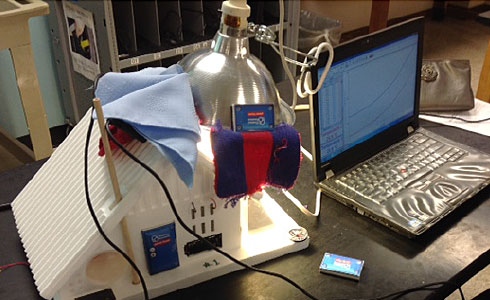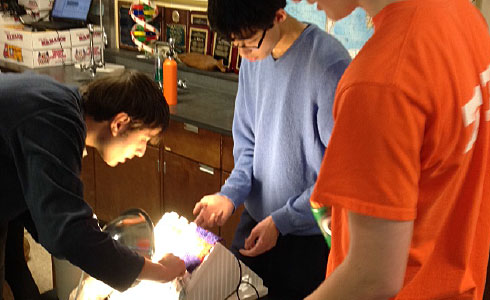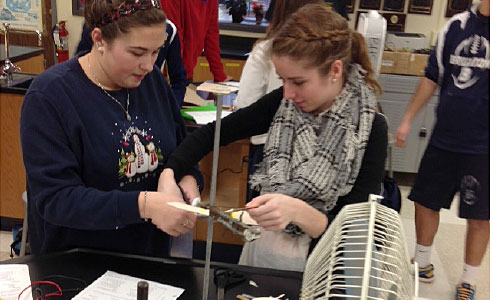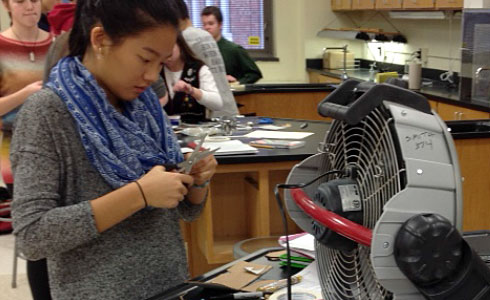 AP Environmental Science Labs
AP Environmental Science Labs
In AP Environmental Science, the students already have many opportunities for "guided play" and experimentation with conventional combustion of biofuels and fossil fuels -- "burning stuff" -- but hands-on explorations of wind and solar energy are more difficult to provide. I appreciate the support I've received from BEF over the years that has allowed me to extend and enrich the curriculum in a variety of ways. BEF funding has been extremely important as seed money, sometimes covering the total costs of materials, and other times providing funding for a "starter set" of materials.

Solar House Lab
These solar houses were purchased several years ago using BEF funding, and are still serving current students very well.
I set up this in-class lab as a competitive event for fabulous prizes: a few pieces of leftover Halloween chocolate & bragging rights! They figure out configurations for maximum heating, followed by maximum cooling. I award prizes for "hottest," "coldest," and "maximum rates of increase and decrease." The LoggerPro software on the laptops makes rate (slope) calculations very quick and easy. I ask them to write up their report for the next day, and for judging.

This lab keeps the students very engaged! They haven't previously had any personal experience with most non-fossil-fuel energy sources, and this hands-on work sure beats just hearing about renewable energy technology.
Wind Turbine Lab
We have used the Mini Wind Turbine Lab for several years as an introductory hands-on activity to introduce students to wind power and wind-generated electricity. I introduce the basic physics of aerodynamics and fluid flow, show them a couple of examples, and set them to work on designing wind turbine blades that they connect to small DC motors that are used as tiny generators, using fans as a wind source.

I provide a variety of materials for construction -- cardboard, straws, tape, and glue guns -- and we measure the current generated as our measure of success. (It's all very competitive, with prizes for the winning teams mostly Halloween candy leftovers.) This activity involves lots of trial-and-error. We look at the various competing designs, and talk about what makes a design effective or ineffective.

With the wind turbine lab experience behind them, students are primed for more in-depth follow-up: more sophisticated design and construction. With materials on order now (and funded by another BEF grant) we will take many more measurements and calculate power output and efficiency as we are already doing with biofuels and fossil fuels. These energy-based calculations are the nuts-and-bolts of energy utilization and a big part of the AP Environmental Science curriculum and exam. The Energy unit is one of the larger units of the year, so there is both the need and the opportunity to expand this work.
BEF funding has been critical to my ability to develop the course and curriculum on a year-to-year basis. If I was solely funding this course development through our BHS Science Department budget (or out-of-pocket), the process would be much slower -- more halting and more limited. With BEF funding I am able to make clear forward progress and keep up with current developments.
Thank you again for your support.
George Smith
Science Teacher
Brighton High School
December, 2014


Brighton Education Fund

c/o Brighton Schools, 2035 Monroe Avenue, Rochester, New York 14618
voice (716) 461-0434 fax (208) 975-7494





